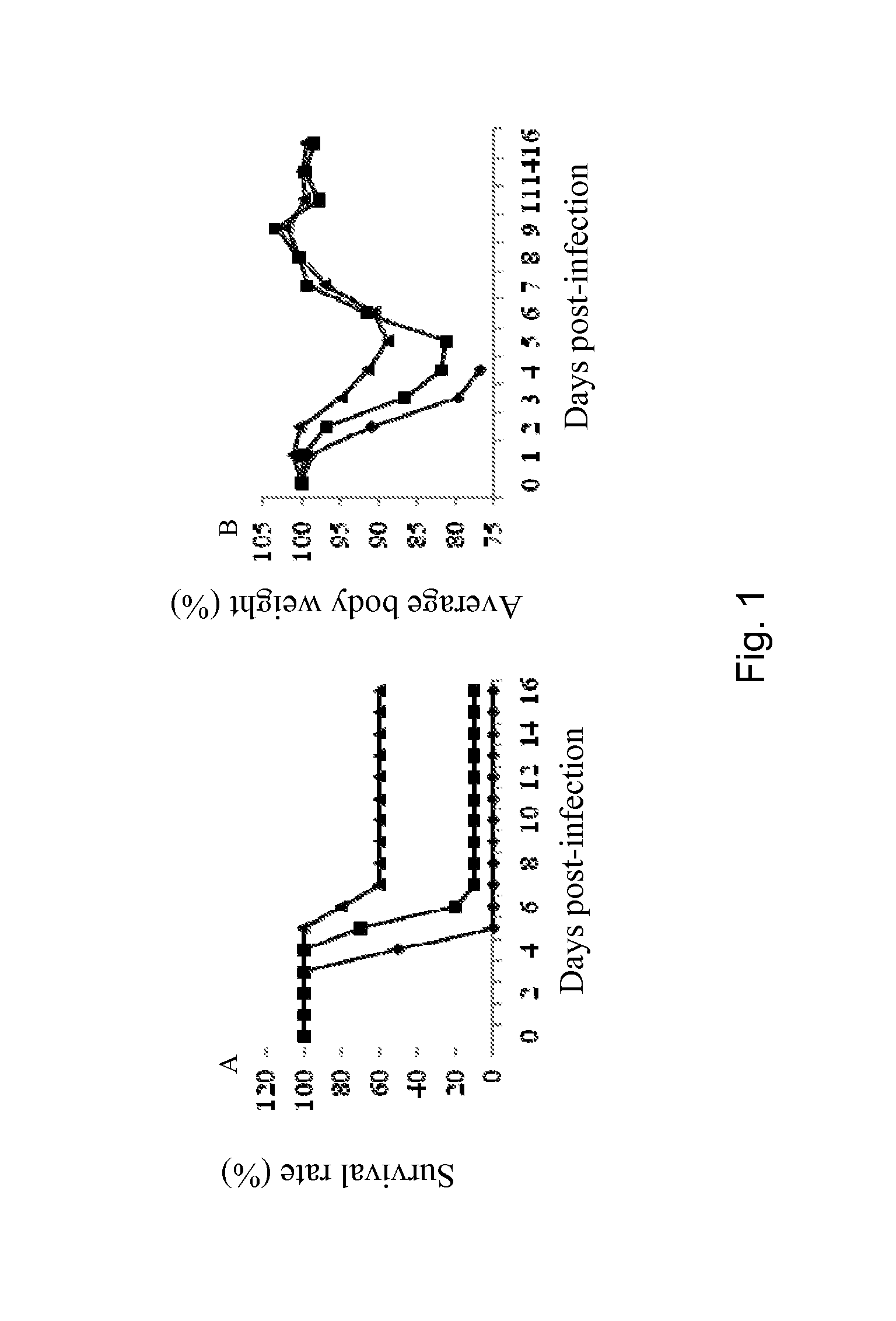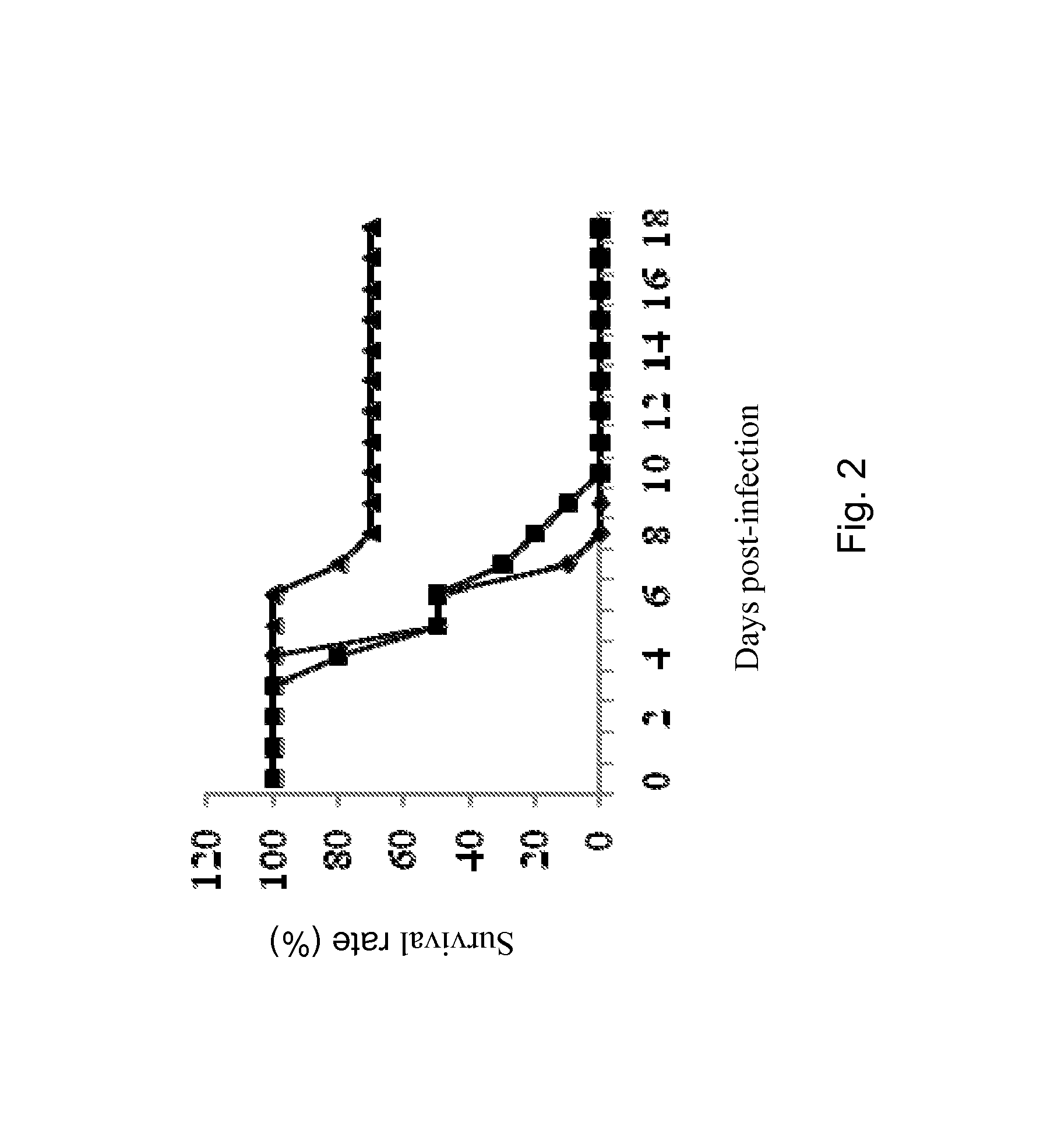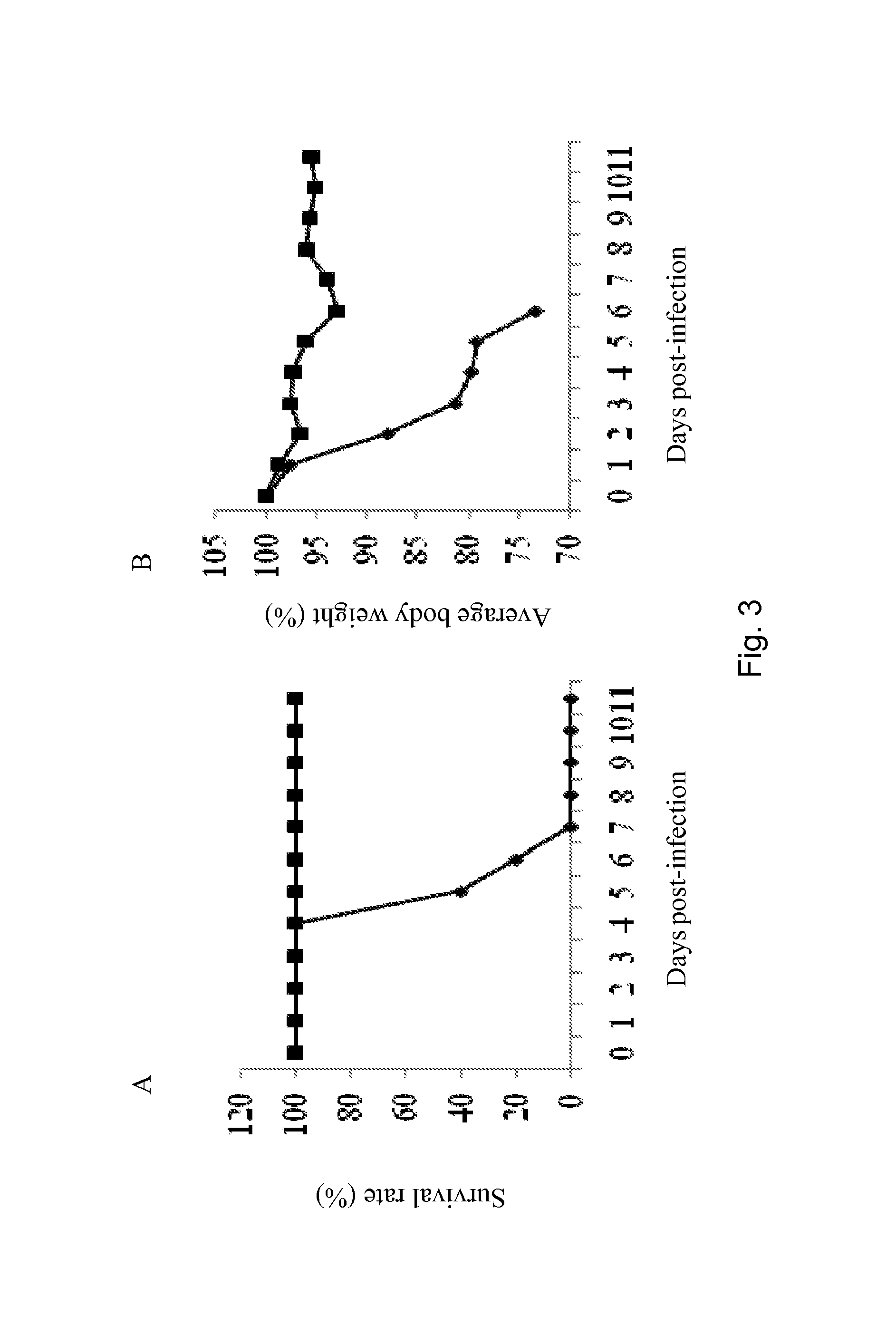Influenza vaccine, composition, and methods of use
a technology of influenza vaccine and composition, applied in the field of microbiology and virology, can solve the problems of new strains, difficult effective vaccine production, and potential infectious strains
- Summary
- Abstract
- Description
- Claims
- Application Information
AI Technical Summary
Benefits of technology
Problems solved by technology
Method used
Image
Examples
example 1
A Single Nasal Administration of Live Attenuated Bordetella Pertussis Protects Against H3n2 Influenza Challenge
[0188]A mouse-adapted H3N2 influenza virus was obtained through successive lung-to-lung passages of the A / Aichi / 2 / 68 (H3N2) virus into adult Balb / c mice (Narasaraju T, et al., “Adaptation of human influenza H3N2 virus in a mouse pneumonitis model: insights into viral virulence, tissue tropism and host pathogenesis”, Microbes Infect 11: 2-11, 2009). Passage 10 (P10) strain exhibited high virulence, causing extra-pulmonary spread with necrotic and inflammatory lesions in the various organs of the infected animals. Nasal administration of 2×106 TCID50 of the P10 viral suspension caused the death of the animals within 4 days (Narasaraju T, et al., “Adaptation of human influenza H3N2 virus in a mouse pneumonitis model: insights into viral virulence, tissue tropism and host pathogenesis”, Microbes Infect 11:2-11, 2009).
[0189]Adult Balb / c mice were nasally inoculated with live BPZ...
example 2
Live But Not Dead Bpze1 Bacteria Protect Against Lethal H3n2 Challenge
[0190]Adult Balb / c mice were nasally administered once with live or dead BPZE1 bacteria and were subsequently challenged with a lethal dose of mouse-adapted H3N2 virus 6 weeks post-BPZE1 treatment. The results showed that dead bacteria did not provide any significant protection against H3N2 (FIG. 2), suggesting that bacterial colonization of the mouse lung is necessary to induce the protective mechanisms.
example 3
Boost Effect
[0191]Live BPZE1 bacteria were nasally administered to Balb / c mice twice at a 4-week interval prior lethal challenge with mouse-adapted H3N2 virus performed 4 weeks after the last BPZE1 administration. A 100% protection rate was obtained for the BPZE1-treated animals with minimal body weight changes (FIG. 3). Similar protection rate was achieved when the viral challenge was performed 2 weeks after the boost. These data indicated that a second nasal administration of live BPZE1 bacteria not only enhanced the protection efficacy but also shortened the time necessary to trigger the protective mechanisms.
PUM
| Property | Measurement | Unit |
|---|---|---|
| diameter | aaaaa | aaaaa |
| diameter | aaaaa | aaaaa |
| diameter | aaaaa | aaaaa |
Abstract
Description
Claims
Application Information
 Login to View More
Login to View More - R&D
- Intellectual Property
- Life Sciences
- Materials
- Tech Scout
- Unparalleled Data Quality
- Higher Quality Content
- 60% Fewer Hallucinations
Browse by: Latest US Patents, China's latest patents, Technical Efficacy Thesaurus, Application Domain, Technology Topic, Popular Technical Reports.
© 2025 PatSnap. All rights reserved.Legal|Privacy policy|Modern Slavery Act Transparency Statement|Sitemap|About US| Contact US: help@patsnap.com



